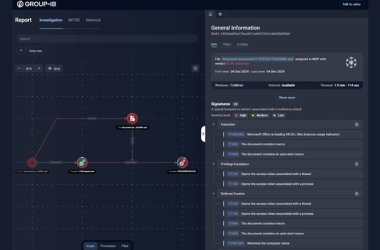Companies with IT security strategies that focus mostly on complying with key standards are dangerously unprepared for emerging cyber threats, said security experts.
Over the past few years, the security strategies of many companies and government agencies have centered around meeting the requirements of Sarbanes-Oxley, Health Information Portability and Accountability Act (HIPAA), the Payment Card Industry Data Security Standards (PCI DSS), Federal Information Security Management Act (FISMA) and other government and industry standards.
Experts say that meeting such standards is important, but they should be used as baseline controls in a broader IT security strategy.
“The audit industry has become a monster,” said Anup Ghosh, founder of security firm Invincea.
“Keeping those guys at bay” has become a full-time job in many IT security organisations, he said. “A lot of compliance regimens have been all about checking boxes and following processes.”
Most of the standards call on companies to implement a fairly minimal set of security controls, Ghosh said. Nonetheless, he added, the task makes up the bulk of security budgets at many companies.
“If all you are doing is meeting an audit need, you are not focusing on what the threats are. We’ve got to get away from compliance driven security to threat-based security,” Ghosh said.
Compliance requirements are often static and prescriptive, according to security executives. Compliance gives organisations a way to measure the outcome of security efforts, though the measurements can be misleading and provide only a one-time snapshot.
For instance, security experts maintain that organisations can be fully compliant with a specific standard, but still lack protection from multiple threats.
Critics cite the efforts of federal agencies over the past decade to implement FISMA requirements and pass compliance audits. The FISMA standards, while well intentioned, have become mostly an exercise in paperwork by agencies whose primary goal is compliance rather than security, they argue.
Increasingly, information security is about situational awareness, said Stephen Trilling, chief technology officer at Symantec. It is about understanding all potential threats and making sure IT security can respond to any that comes up.
“A lot of companies have compliance without actually doing the work,” Trilling said. “You can always do the minimum to check a box,” but that’s not enough to ensure that a company or government agency can ward off cyber attacks, he said.
Trilling noted that the latest cyber attacks are highly targeted and carried out by persistent and sophisticated adversaries.
Traditional signature-based security tools cannot protect against somewhat unique, auto generated malware that’s becoming widely used by cybercriminals. “Now you have millions of threats, each of which is one or two or three machines,” Trilling said.
IT security personnel must therefore look beyond compliance-driven security models to deal with these threats, he said.
“I’ve lived through an earthquake, so I have a visceral sense for why you need earthquake insurance,” Trilling said. IT security managers must have that same sense when it comes to information security, he added.
“Companies that have experienced attacks don’t have that sense so they have been doing what they need to do to check the box,” Trilling said.






